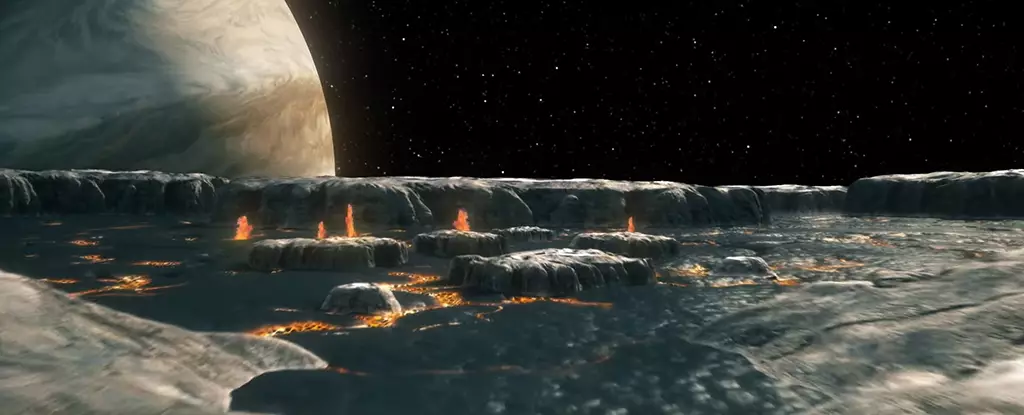Jupiter’s moon Io, famed for its extreme volcanic activity, has long intrigued scientists and astronomers alike. As the most volcanically active body in our Solar System, Io is peppered with approximately 400 volcanoes and expansive lava flows that create a chaotic yet captivating landscape. Historically, scientists posited that a vast ocean of magma lay beneath Io’s surface, fueling its relentless geysers and fiery eruptions. However, a groundbreaking study has started to peel back this misconception, suggesting that the driving force behind Io’s volcanism might be more localized than previously believed.
The recent study, conducted by an international team of researchers, relied heavily on data obtained from NASA’s Juno spacecraft. By analyzing high-resolution images and gravitational measurements alongside historical information about Io’s tidal deformations, researchers challenged the long-held belief that a large-scale magma ocean existed beneath the surface. Instead, their findings propose a model where Io’s volcanic activity is sustained by localized magma chambers buried within a mostly solid mantle. This revelation offers a fresh perspective on Io’s geological processes and calls into question our understanding of other planetary bodies that are considered to have similar magma oceans during their formative years.
Central to the study of Io’s geology is the role of gravitational forces exerted by Jupiter, which shapes the moon’s elliptical orbit. This gravitational tugging leads to a phenomenon known as tidal flexing, where Io’s shape is distorted continually, generating extreme internal heat. Tidal flexing is responsible for the melting processes within Io, leading to considerable volcanic eruptions. However, the researchers determined that the observed deformations did not support the existence of a permanent global magma ocean near the surface as had been theorized. Such extensive deformities would exhibit a different gravitational signature than what has been recorded, reinforcing the notion of a more rigid internal structure.
Io’s dramatically volatile surface, often likened to an otherworldly pizza due to its colorful patches of active volcanic remnants, reveals the fierce nature of its geology. The eruptions and lava flows can spiral outwards, reaching sizes that are almost incomprehensible, effectively reshaping its surface with every burst of activity. The unrelenting cycle of volcanic eruptions not only alters the moon’s appearance but also reveals much about the internal processes at play. Researchers emphasize that as they gain insights into Io, they also glean valuable information regarding tidal flexing’s broader implications on other celestial bodies.
The empirical evidence uncovered in this study has ramifications that extend beyond Io itself. By reframing how we understand this particular moon, scientists contend that their findings will enrich our knowledge concerning other moons within our Solar System, such as Enceladus and Europa. Moreover, this new understanding also holds the potential to influence models related to exoplanets and super-Earths—worlds that, like Io, experience extreme tidal forces. Ryan Park, an astronautical engineer at JPL, emphasized that these insights provide a more nuanced view of icy and rocky bodies elsewhere in the cosmos.
The recent study on Io marks a pivotal shift in our comprehension of volcanic activity and geological processes within the Solar System. By employing advanced imaging and gravitational studies, researchers have not only redefined the mechanisms driving Io’s eruptions but also opened new avenues for research into the geophysical characteristics of other celestial bodies. The implications of these findings prompt a reevaluation of our understanding of planetary formation and evolution, reshaping how we view not only Io but also other worlds beyond our own. As we continue to explore the heavens, studies like these remind us how much remains to be discovered in the complex tapestry of planetary and lunar geologies.


Leave a Reply